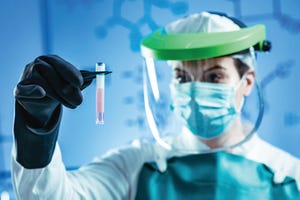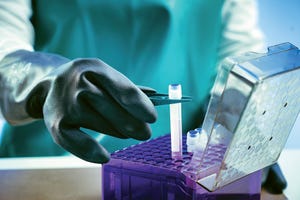June 2021 Featured Report
For comments about how contract development and manufacturing organizations (CDMOs) manage their cell-banking quality assurance (QA) practices. I contacted long-time member of BPI’s Editorial Advisory Board Scott M. Wheelwright, PhD, for his perspectives. Wheelwright brings many years of experience to this discussion, with insights into the evolution of technologies and practices extending back to the early launch of the biopharmaceutical industry. Currently, he provides consulting support for companies with manufacturing and sourcing in China and other Asian countries. He also serves as chief operating officer for BioInno Bioscience Co., Ltd., based in Suzhou, China. BioInno is a CDMO for development and manufacture of antibodies, cell therapies, and gene therapies.
I also spoke with H. Fai Poon, chief operating officer of QuaCell Biotechnology, Co., Ltd., based in Zhongshan, Guangdong, China. His previous positions include chief scientific officer and director of cell culture at Zhejiang Hisun Pharmaceu...
Living cells are at the heart of biotechnology, and cell lines for production and testing of biopharmaceuticals are highly valuable assets. The process of banking cells generally moves from development of a research cell bank (RCB) based on a clone of interest to establishment of a master cell bank (MCB), from which working cell banks (WCBs) can be produced. Especially for biotechnology startups, preparation of an MCB can involve a significant jump from work performed in standard laboratory conditions to good manufacturing practice (GMP)-compliant operations. MCBs also must undergo rigorous characterization testing to ensure the purity, safety, functionality, and genetic stability of cells grown from those banks. For such reasons, biopharmaceutical developers usually delegate MCB preparation to contract development and manufacturing organizations (CDMOs).
What processes go into ushering cell banks from their earliest forms to those that enable GMP production of biologics? Under what conditions will contra...
Regenerative medicine holds great potential for human disease management, with hundreds of cell and gene therapy (CGT) products for tissue/organ reconstitution or replacement in different stages of development and clinical testing for toxicity, safety, and efficacy. For example, currently more than 60 CGTs have marketing authorization (although many with only conditional approval) from central regulatory agencies worldwide (
1
). Those products are treating conditions such as hematopoietic malignancies, immunological disorders, and cartilage disorders. Most of those treatments use culture-expanded autologous or allogeneic cells — some of which are genetically modified, such as for chimeric antigen receptor (CAR) T-cell gene-therapy products.
Nevertheless, the tangible clinical promise of cell, gene, and tissue therapies also has brought about the emergence of tagalong marketing for services both legitimate and dubious, including speculative private cell bank services. By contrast with cord-blood banking (...
Subscribe to receive our monthly print or digital publication
Join our 70,000+ readers. And yes, it's completely free.








